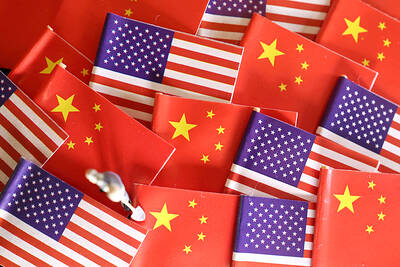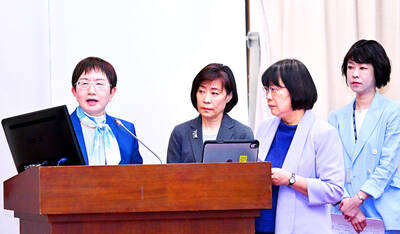Carrefour Corp Taiwan (家樂福), the nation’s largest hypermarket operator, yesterday said it was expanding its business to mobile phone services to boost revenues.
Carrefour will offer telecom service at its 55 outlets nationwide for pre-paid mobile subscribers via subsidiary Carrefour Telecommunications Co (家樂福電信) today after a soft launch in January.
Carrefour Telecommunications is leasing network space from Chunghwa Telecom Co (中華電信), the nation’s top telecom operator.
During its promotional period, Carrefour will offer a program that enables cardholders to earn one point for every dollar spent at Carrefour stores. A hundred points can be exchanged for one minute of telephone time.
“By doing so, we hope to increase customers’ visit frequency and time spent at the outlet, and also help Carrefour create a new source of revenue,” said Li Yi-jen (李宜真), general manager and director of Carrefour Telecommunications.
Carrefour has 3.8 million members, all of whom are potential subscribers to the mobile phone service, Li said. Most members usually pay NT$600 in telecom charges per month, Li added.
Carrefour posted lower revenues for the third quarter at 365 million euros (US$467 million), down 1.4 percent year on year, after contaminated milk powder curtailed consumer purchases.
The firm first tapped cellphone services in Europe 10 years ago. It now offers services in collaboration with telecom operators in Belgium, France, Italy and Poland.

‘SWASTICAR’: Tesla CEO Elon Musk’s close association with Donald Trump has prompted opponents to brand him a ‘Nazi’ and resulted in a dramatic drop in sales Demonstrators descended on Tesla Inc dealerships across the US, and in Europe and Canada on Saturday to protest company chief Elon Musk, who has amassed extraordinary power as a top adviser to US President Donald Trump. Waving signs with messages such as “Musk is stealing our money” and “Reclaim our country,” the protests largely took place peacefully following fiery episodes of vandalism on Tesla vehicles, dealerships and other facilities in recent weeks that US officials have denounced as terrorism. Hundreds rallied on Saturday outside the Tesla dealership in Manhattan. Some blasted Musk, the world’s richest man, while others demanded the shuttering of his

ADVERSARIES: The new list includes 11 entities in China and one in Taiwan, which is a local branch of Chinese cloud computing firm Inspur Group The US added dozens of entities to a trade blacklist on Tuesday, the US Department of Commerce said, in part to disrupt Beijing’s artificial intelligence (AI) and advanced computing capabilities. The action affects 80 entities from countries including China, the United Arab Emirates and Iran, with the commerce department citing their “activities contrary to US national security and foreign policy.” Those added to the “entity list” are restricted from obtaining US items and technologies without government authorization. “We will not allow adversaries to exploit American technology to bolster their own militaries and threaten American lives,” US Secretary of Commerce Howard Lutnick said. The entities

Minister of Finance Chuang Tsui-yun (莊翠雲) yesterday told lawmakers that she “would not speculate,” but a “response plan” has been prepared in case Taiwan is targeted by US President Donald Trump’s reciprocal tariffs, which are to be announced on Wednesday next week. The Trump administration, including US Secretary of the Treasury Scott Bessent, has said that much of the proposed reciprocal tariffs would focus on the 15 countries that have the highest trade surpluses with the US. Bessent has referred to those countries as the “dirty 15,” but has not named them. Last year, Taiwan’s US$73.9 billion trade surplus with the US

Prices of gasoline and diesel products at domestic gas stations are to fall NT$0.2 and NT$0.1 per liter respectively this week, even though international crude oil prices rose last week, CPC Corp, Taiwan (台灣中油) and Formosa Petrochemical Corp (台塑石化) said yesterday. International crude oil prices continued rising last week, as the US Energy Information Administration reported a larger-than-expected drop in US commercial crude oil inventories, CPC said in a statement. Based on the company’s floating oil price formula, the cost of crude oil rose 2.38 percent last week from a week earlier, it said. News that US President Donald Trump plans a “secondary